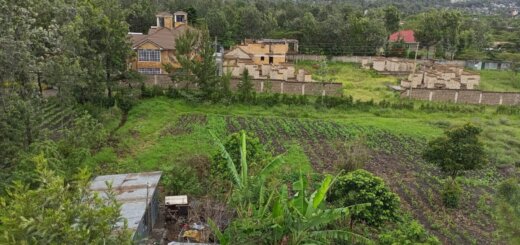Allocation of Public Land in Kenya: A Comprehensive Guide
Introduction to Public Land Allocation
In Kenya, public land is land owned by the government and set aside for public use. This includes land designated for infrastructure, conservation, public utilities, and other communal purposes. The allocation of public land is a critical aspect of land management in Kenya, ensuring that land resources are utilized effectively for the benefit of all citizens. This comprehensive guide explores the processes, legal frameworks, and key considerations involved in the allocation of public land in Kenya, emphasizing the importance of land documents in securing and managing these allocations.
Understanding Public Land
Public land encompasses various types of land held by the government for public purposes. This can include:
- Land for national and county government use.
- Land for public institutions such as schools, hospitals, and government buildings.
- Land for infrastructure such as roads, railways, and airports.
- Land designated for conservation purposes, including national parks, forests, and wildlife reserves.
- Land reserved for public utilities like water reservoirs and waste management facilities.
The management and allocation of public land aim to ensure sustainable use, equitable distribution, and the protection of public interests.
Legal Framework Governing Public Land Allocation
Several key pieces of legislation govern the allocation of public land in Kenya. These laws provide the framework for managing, allocating, and utilizing public land effectively.
The Constitution of Kenya 2010
The Constitution of Kenya 2010 is the supreme law that outlines the principles of land management and allocation. It emphasizes the equitable access to land, sustainable land use, and the protection of land rights. The Constitution also establishes the National Land Commission (NLC), tasked with managing public land on behalf of the national and county governments.
The Land Act 2012
The Land Act 2012 governs the management and administration of land in Kenya, including public land. It provides the legal framework for the allocation, leasing, and utilization of public land. The Act outlines the procedures for acquiring public land for development projects and the principles of land valuation and compensation.
The National Land Commission Act 2012
The National Land Commission Act 2012 establishes the National Land Commission (NLC), which oversees the management and administration of public land. The NLC is responsible for allocating public land, investigating land-related disputes, and ensuring compliance with land laws and policies.
The Public Procurement and Asset Disposal Act 2015
The Public Procurement and Asset Disposal Act 2015 regulates the procurement and disposal of public assets, including land. It ensures that the allocation and disposal of public land are conducted transparently, competitively, and in a manner that promotes public confidence.
Role of the National Land Commission (NLC)
The National Land Commission (NLC) plays a pivotal role in the allocation of public land in Kenya. Established under the Constitution of Kenya 2010, the NLC is responsible for:
- Managing and administering public land on behalf of the national and county governments.
- Ensuring the sustainable and equitable use of public land.
- Allocating public land for various uses, including development projects and public utilities.
- Investigating and resolving land-related disputes.
- Protecting and managing environmentally sensitive areas and heritage sites.
The NLC ensures that public land is allocated transparently and equitably, with due consideration to public interests and sustainable development goals.
Process of Allocating Public Land
The allocation of public land in Kenya involves several steps, each requiring specific land documents and adherence to legal procedures. Here’s a detailed overview of the process:
Identification of Public Land
The first step in the allocation process is identifying public land that can be allocated for specific purposes. This involves mapping and surveying public land to determine its availability, suitability, and potential uses. The National Land Commission (NLC) plays a key role in this process, working with other government agencies and stakeholders to identify land for allocation.
Application for Allocation
Individuals, organizations, or government agencies interested in acquiring public land must submit a formal application to the National Land Commission (NLC). The application should include:
- A detailed proposal outlining the intended use of the land.
- Information on the applicant, including legal status and financial capability.
- Any relevant land documents, such as previous land allocations or development plans.
Evaluation and Approval
The NLC evaluates the application based on several criteria, including the proposed use of the land, environmental impact, social and economic benefits, and compliance with land use policies and regulations. The evaluation process may involve public consultations and environmental assessments to ensure that the allocation aligns with sustainable development goals.
Once the evaluation is complete, the NLC makes a decision on whether to approve or reject the application. Approved allocations are subject to conditions and terms specified by the NLC, including land use restrictions and development timelines.
Issuance of Allocation Letter
If the application is approved, the NLC issues an allocation letter to the applicant. The allocation letter outlines the terms and conditions of the land allocation, including the duration of the lease (if applicable), development requirements, and any restrictions on land use. The allocation letter serves as a preliminary agreement between the NLC and the applicant, pending the completion of formal documentation and registration.
Preparation of Lease Agreement
For leasehold allocations, the next step involves preparing a lease agreement. The lease agreement is a legally binding contract between the NLC (as the lessor) and the applicant (as the lessee), outlining the rights and obligations of both parties. Key components of the lease agreement include:
- Description of the land, including boundaries and size.
- Duration of the lease and conditions for renewal.
- Rent payable and payment schedule.
- Development requirements and timelines.
- Restrictions on land use and environmental considerations.
The lease agreement must be signed by both parties and witnessed, after which it becomes legally binding.
Registration of Lease
The final step in the allocation process is registering the lease agreement with the relevant land registry. This involves submitting the signed lease agreement, allocation letter, and any other required land documents to the Ministry of Lands for registration. Once registered, the lessee receives a lease certificate or title deed, formalizing their rights to use and develop the allocated public land.
Importance of Land Documents in Public Land Allocation
Land documents are crucial in the allocation of public land in Kenya. They serve as legal proof of ownership and allocation, outline the terms and conditions of land use, and provide a framework for resolving disputes. Proper documentation ensures transparency, accountability, and compliance with legal and regulatory frameworks. Below, we delve deeper into the significance of various land documents involved in the public land allocation process.
Allocation Letter
The allocation letter is one of the first formal documents issued during the public land allocation process. It is granted by the National Land Commission (NLC) after evaluating and approving an application for public land. The allocation letter includes essential details such as:
- Approval Confirmation: Confirms that the applicant has been granted the right to use the specified parcel of public land.
- Terms and Conditions: Outlines the terms and conditions of the land allocation, including permitted uses, development requirements, and any restrictions on land use.
- Preliminary Agreement: Serves as a preliminary agreement between the NLC and the applicant, pending the finalization of lease agreements and other formal documentation.
The allocation letter is critical because it provides initial legal recognition of the allocation and sets the stage for subsequent steps in the allocation process.
Lease Agreement
For leasehold allocations, the lease agreement is a legally binding contract between the NLC (as the lessor) and the applicant (as the lessee). The lease agreement is pivotal because it:
- Defines Legal Rights and Obligations: Clearly delineates the rights and responsibilities of both the lessor and the lessee. This includes the duration of the lease, rent payable, and compliance with land use regulations.
- Provides Security of Tenure: Grants the lessee secure rights to use and develop the land for the duration of the lease, subject to compliance with the terms and conditions.
- Facilitates Development and Investment: By providing a clear legal framework, the lease agreement enables lessees to plan and execute development projects with confidence. It is often required for securing financing and investment.
The lease agreement must be meticulously drafted and reviewed to ensure that it protects the interests of both parties and complies with Kenyan law.
Lease Certificate or Title Deed
Once the lease agreement is registered, the lessee receives a lease certificate or title deed. This document is vital for several reasons:
- Legal Proof of Allocation: Serves as the official record of the lessee’s rights to use and develop the allocated public land. It is the definitive proof of the allocation and legal rights over the land.
- Facilitates Transactions: The lease certificate or title deed is essential for any future transactions involving the land, such as selling, leasing, or using the land as collateral for a loan.
- Protects Against Disputes: Provides clear and documented evidence of the lessee’s rights, which is crucial in preventing and resolving disputes over land ownership and use.
Environmental Impact Assessment (EIA) Report
For projects that may have significant environmental impacts, an Environmental Impact Assessment (EIA) report is required. This document is critical in the public land allocation process because it:
- Assesses Environmental Impact: Evaluates the potential environmental effects of the proposed development and outlines measures to mitigate negative impacts.
- Ensures Compliance with Environmental Laws: Ensures that the proposed project complies with environmental regulations and standards, promoting sustainable land use.
- Informs Decision-Making: Provides valuable information to decision-makers, stakeholders, and the public, facilitating informed and transparent decision-making.
The EIA report is often a prerequisite for obtaining permits and approvals for development projects on public land.
Development Plans and Permits
Development plans and permits are essential documents that outline the specifics of proposed developments on allocated public land. They include:
- Detailed Construction Plans: Specify the design, layout, and construction details of the proposed development.
- Land Use Changes: Document any changes in land use, such as converting agricultural land to residential or commercial use.
- Infrastructure Requirements: Outline the necessary infrastructure, such as roads, utilities, and public services, required to support the development.
These documents must be reviewed and approved by relevant authorities, such as county governments and environmental agencies. They ensure that the development complies with zoning laws, building codes, and other regulatory requirements.
Land Rates and Rent Clearance Certificates
Before the final registration of the lease or title deed, several clearance certificates must be obtained to confirm that the property is free from outstanding liabilities. These include:
- Land Rates Clearance Certificate: Issued by the local county government, this certificate confirms that all land rates have been paid up to date. Land rates are annual taxes levied on property owners, and any outstanding rates must be cleared before the transfer of ownership can proceed.
- Land Rent Clearance Certificate: For leasehold properties, the land rent clearance certificate verifies that all rent due to the government has been paid. Leasehold properties require annual rent payments to the government, and any arrears must be settled before the transfer of title.
These clearance certificates are crucial for ensuring that the land is free from financial encumbrances and can be legally transferred to the new owner.
Importance of Accurate Land Records
Accurate land records are fundamental to the effective allocation and management of public land. They ensure that:
- Land Ownership is Clearly Documented: Accurate records provide clear documentation of land ownership and allocation, reducing the risk of disputes and illegal land transactions.
- Boundaries are Well-Defined: Clearly defined boundaries help prevent conflicts and encroachments, ensuring that land use is properly managed.
- Transactions are Legally Recorded: Proper documentation of land transactions ensures legal compliance and provides a reliable record for future reference.
The Ministry of Lands and the National Land Commission (NLC) are responsible for maintaining and updating land records in Kenya. Property owners and lessees should ensure that their land documents are up-to-date and accurately reflect their rights and obligations.
Challenges in Public Land Allocation
The allocation of public land in Kenya is a critical process that ensures land resources are utilized effectively for the benefit of all citizens. However, this process is fraught with various challenges that can hinder its effectiveness and fairness. These challenges include corruption and mismanagement, land grabbing and encroachment, environmental concerns, and legal and bureaucratic complexities. Understanding and addressing these challenges is crucial for improving the allocation process and ensuring that public land serves the intended purposes.
Corruption and Mismanagement
Prevalence of Corruption
Corruption is a significant challenge in the allocation of public land in Kenya. It manifests in various forms, including bribery, favoritism, and fraudulent allocation of land. Corruption undermines the transparency and fairness of the allocation process, leading to the illegal acquisition of public land by individuals or entities that may not be eligible or deserving.
Impact on Public Trust
Corruption and mismanagement erode public trust in the institutions responsible for land allocation. When citizens perceive that land is being allocated unfairly or through corrupt practices, it undermines confidence in the government and the National Land Commission (NLC). Restoring public trust requires implementing strict anti-corruption measures and ensuring accountability in land management.
Measures to Combat Corruption
Combating corruption requires a multi-faceted approach. This includes strengthening institutional frameworks, enhancing transparency in the allocation process, and implementing robust monitoring and evaluation mechanisms. Ensuring that land allocation decisions are made publicly and that there is a clear, documented trail of the allocation process can help reduce opportunities for corrupt practices.
Land Grabbing and Encroachment
Illegal Land Acquisition
Land grabbing involves the illegal acquisition of public land by individuals or entities, often through fraudulent means or forceful occupation. This practice deprives the public of valuable land resources and can lead to conflicts and legal disputes. Land grabbing is often facilitated by corrupt officials who manipulate land records or issue fake title deeds.
Encroachment on Public Land
Encroachment occurs when individuals or groups unlawfully occupy public land, often for residential or commercial purposes. Encroachment can lead to the degradation of public resources, such as forests and water bodies, and can disrupt planned land use and development projects. Addressing encroachment requires robust enforcement of land laws and regulations.
Strategies to Prevent Land Grabbing and Encroachment
Preventing land grabbing and encroachment involves strengthening land governance systems, ensuring accurate and up-to-date land records, and enhancing public awareness of land rights and laws. Implementing stringent penalties for illegal land acquisition and occupation can also serve as a deterrent. Additionally, community engagement and participation in land management can help monitor and report cases of land grabbing and encroachment.
Environmental Concerns
Impact of Development Projects
Allocating public land for development projects, such as infrastructure, industrial parks, and housing schemes, can have significant environmental impacts. These impacts may include deforestation, loss of biodiversity, soil erosion, and pollution. Ensuring that development projects are environmentally sustainable is crucial for preserving Kenya’s natural resources.
Importance of Environmental Impact Assessments (EIA)
Environmental Impact Assessments (EIA) are essential for identifying and mitigating the potential environmental impacts of development projects on public land. An EIA involves evaluating the environmental consequences of a proposed project, including its effects on air and water quality, wildlife, and vegetation. The EIA process also involves public consultations to gather input from affected communities and stakeholders.
Promoting Sustainable Land Use
Promoting sustainable land use requires integrating environmental considerations into land allocation and development planning. This includes adopting practices that minimize environmental degradation, such as sustainable agriculture, conservation of natural habitats, and eco-friendly construction techniques. Policies that encourage green infrastructure and renewable energy projects can also contribute to sustainable land use.
Legal and Bureaucratic Complexities
Navigating Legal Frameworks
The legal framework governing land allocation in Kenya is complex, involving multiple laws, regulations, and institutions. Navigating these legal frameworks can be challenging for individuals and organizations seeking to acquire public land. Ensuring compliance with all legal requirements is essential to avoid legal disputes and invalidation of land allocations.
Bureaucratic Hurdles
Bureaucratic hurdles, such as lengthy approval processes, excessive paperwork, and lack of coordination between government agencies, can delay the allocation of public land. These hurdles can discourage investment and hinder the timely implementation of development projects. Streamlining bureaucratic processes and improving inter-agency coordination are necessary to enhance efficiency in land allocation.
Legal Disputes and Conflicts
Legal disputes and conflicts over public land allocation can arise from unclear land ownership, boundary issues, and competing claims. Resolving these disputes requires a robust legal system and effective dispute resolution mechanisms. The Environment and Land Court, established to handle land-related disputes, plays a crucial role in resolving conflicts and ensuring justice.
Enhancing Legal and Administrative Capacity
Enhancing the legal and administrative capacity of institutions involved in land allocation is crucial for addressing legal and bureaucratic complexities. This includes training staff, improving record-keeping systems, and adopting digital technologies to streamline processes. Transparent and efficient land administration can reduce delays and improve the overall effectiveness of public land allocation.
Importance of Accurate Land Records
Preventing Disputes and Conflicts
Accurate land records are essential for preventing disputes and conflicts over land allocation. Clear and up-to-date records provide legal proof of ownership, define boundaries, and document land use changes. Ensuring that land records are maintained accurately and transparently can help resolve potential conflicts before they escalate.
Enhancing Transparency and Accountability
Accurate land records enhance transparency and accountability in land management. By providing a clear record of land allocations, transactions, and ownership changes, land records ensure that land is managed in accordance with legal and policy frameworks. Public access to land records can also promote accountability and deter corrupt practices.
Role of Technology in Land Record Management
Adopting digital technologies can significantly improve land record management. Geographic Information Systems (GIS), blockchain, and other digital tools can enhance the accuracy, accessibility, and security of land records. Digital land records can be updated in real-time, reducing the risk of fraud and ensuring that land information is readily available to stakeholders.
Conclusion
The allocation of public land in Kenya is a complex process that involves multiple steps, legal frameworks, and key considerations. The National Land Commission (NLC) plays a pivotal role in managing and allocating public land, ensuring that land resources are utilized effectively for the benefit of all citizens. Understanding the legal framework, the role of land documents, and the challenges involved in public land allocation is essential for ensuring transparency, equity, and sustainability in land management.



